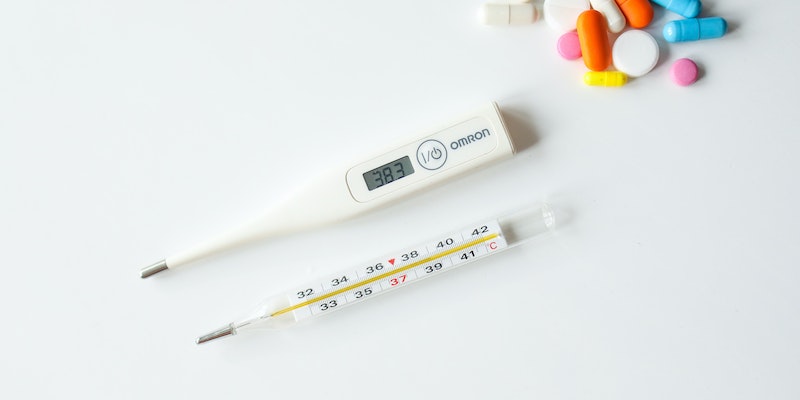
Lupus is an intricate autoimmune disease wherein the body's immune system begins to attack its tissues and organs. This can impact various body parts, such as joints, skin, kidneys, blood cells, heart, and lungs. Because of its multifaceted nature, lupus can manifest in many symptoms, often differing from one patient to another. We will go through all the potentially known signs and symptoms of Lupus and other risk factors.
Common Signs and Symptoms of Lupus
Lupus, a multifaceted autoimmune disorder, reveals itself in many ways across different patients. Some of the most frequent and recognizable signs of lupus are as follows:
1. Fatigue and Fever
It's often stated by patients that one of the most pervasive symptoms of lupus is overwhelming fatigue. This isn't just the regular tiredness one feels after a long day; it's an incapacitating fatigue that doesn't necessarily improve with sleep. Many individuals describe it as akin to the exhaustion associated with the flu. Coupled with this debilitating tiredness, sporadic fevers, often mild, are common among lupus patients. These fevers are usually an early sign that lupus is active in the body. While they can be unsettling, it's vital to communicate these episodes to healthcare professionals, as they can assist in diagnosing and treating lupus.
2. Joint Pain, Stiffness, and Swelling
Joint discomfort is frequently reported among people living with lupus. Predominantly felt in smaller joints, such as those in the fingers and wrists, it can also affect larger joints like the knees. This pain can range from a dull ache to a sharp sting and may come on suddenly, catching individuals off guard. Alongside pain, joints might become stiff, especially in the morning, and visible swelling might be noticeable. The pain might fluctuate, being intense one day and mild the next, creating a challenge in daily tasks for the individual.
3. Skin Lesions and the Early Stage Discoid Lupus Rash
Lupus has a dermatological solid component. A clear indicator of this is the discoid rash. In its early stages, this rash is raised, red, and scaly. It usually finds its home on the face, scalp, and ears but can appear elsewhere. An interesting observation is its sensitivity to ultraviolet rays, meaning that exposure to the sun or certain artificial lights can exacerbate it. It's thus crucial for individuals exhibiting the early stage discoid lupus rash to be cautious of their sun exposure.
4. Butterfly-shaped Rash on the Face
The malar rash, often known as the butterfly rash because of the distinctive shape it assumes, is considered to be one of the most recognizable symptoms of lupus. This rash, which encompasses the cheeks and extends over the bridge of the nose, can be slight or noticeable, depending on its severity, and is frequently an indication of lupus.
5. Difficulty Drawing Breath
The most common cause of respiratory symptoms in lupus is inflammation, which can occur in either the lungs or the lining of the lungs. This inflammation can make breathing unpleasant and lead to insufficient air, which can cause the individual to feel distressed and anxious.
6. Chest Pain

Pain in the chest that is described as being acute and penetrating can be brought on by inflammation of the pericardium, which is the membrane that surrounds the heart. This pericarditis can be unpleasant, and it typically gets worse when the patient lies down or takes a deep breath.
7. Dry Eyes
Dry eyes are a symptom that can be caused by lupus as well as other disorders related to it, such as Sjogren's syndrome. This is not simply a slight annoyance; it is an ongoing sensation of grit, itching, or burning for some people. If treatment for lupus is not sought for more severe cases of dryness, it can impair vision and cause issues if left unchecked.
8. Headaches, Confusion, Memory Loss
Lupus can affect not only a person's physical appearance but also their mental and cognitive capabilities as well. Patients with lupus commonly experience symptoms such as frequent and robust headaches, spells of disorientation, and memory lapses. These neurological symptoms can be highly upsetting, and their impact on day-to-day functioning and quality of life can be significant.
Factors That Put You at Risk
Although the precise reason why lupus develops has not been pinpointed, researchers believe that a person's genes, their environment, and their hormones could all play a part. Individuals vulnerable to developing discoid lupus may be affected by a rash and other symptoms if exposed to certain conditions, such as the sun, for an extended period. In addition, lupus symptoms may be triggered or made worse by infections, particular medications, or even physical damage.
Diagnosis and Treatment of Lupus

Because lupus symptoms frequently coincide with those of other illnesses, an accurate diagnosis is essential. When trying to diagnose a condition, medical professionals may use several tests, such as blood tests, urine tests, or biopsies. After a diagnosis, the therapy for lupus often focuses on minimizing symptoms and the severity of flare-ups. Anti-inflammatory drugs, antimalarial drugs, corticosteroids, and immunosuppressants are examples of the types of pharmaceuticals that are frequently provided to patients.
Alterations to one's way of life are often necessary in lupus management. The most important things you can do for your health are to get enough sleep, eat well, and control your stress. In addition, protection from the sun helps prevent the early stage discoid lupus rash and associated skin lesions from becoming more severe.
Bottom Line
In conclusion, lupus is a complex condition with a range of symptoms. Recognizing the signs of lupus, such as the early stage discoid lupus rash, can lead to early diagnosis and effective treatment. This early detection in patients can help in enabling patients to lead fuller, healthier lives. So, it's always imperative to consult with healthcare professionals regarding any potential symptoms or concerns. It is high time we start taking our health seriously.



